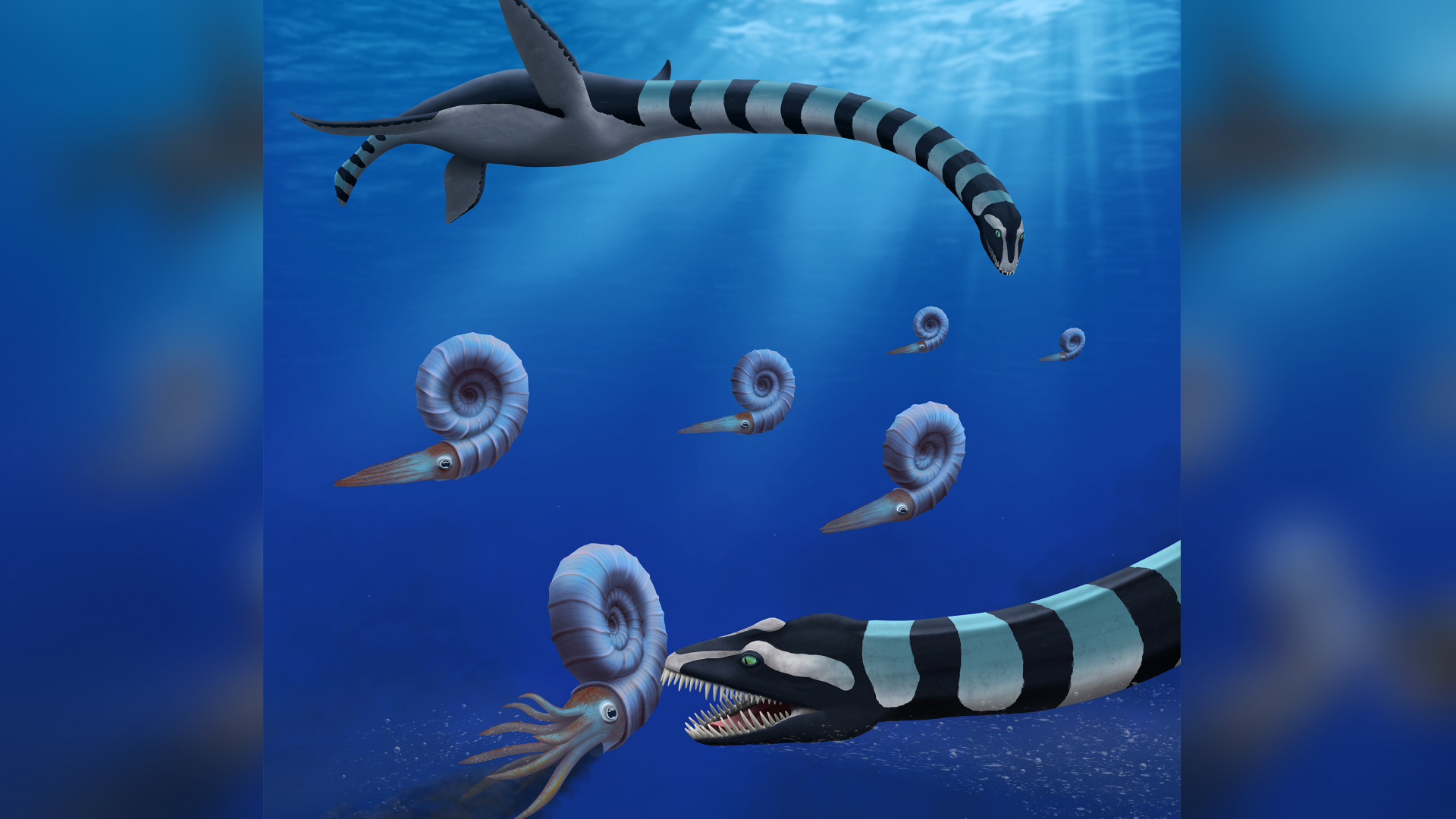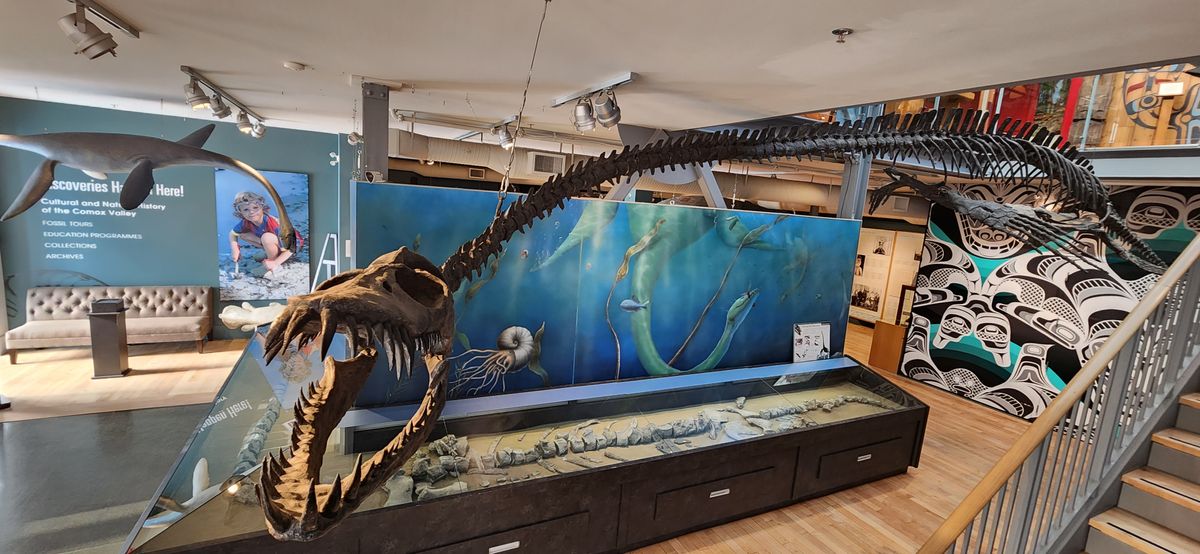Prehistoric sea monster finally identified after 35 years of mystery
Follow us on Google News (click on ☆)
Fossils of this aquatic predator, measuring up to 40 feet (12 meters) long, have been known since the 1980s. A research team has finally been able to attribute them to a previously unknown species, named Traskasaura sandrae. This discovery sheds new light on the diversity of Cretaceous marine reptiles.

Two Traskasaura sandrae individuals hunting the ammonite Pachydiscus in the North Pacific during the Late Cretaceous.
Credit: Robert O. Clark
The characteristics of T. sandrae clearly distinguish it from other plesiosaurs. Its robust teeth suggest a specialized diet, likely focused on ammonites. This adaptation may explain its evolutionary success in the marine ecosystems of the time.
The adult specimen discovered in 1988 showed ambiguous traits, making its identification difficult. More recent fossils, including a well-preserved juvenile skeleton, have confirmed the existence of a new species. These discoveries highlight the importance of museum collections for paleontological research.
Plesiosaurs, like T. sandrae, inhabited oceans alongside dinosaurs. Their unique morphology, with long necks and powerful flippers, made them formidable predators. However, their lifestyle remains poorly understood due to the rarity of complete fossils.

The juvenile skeleton of T. sandrae revealed unique traits, confirming its status as a new species.
Credit: The Courtenay and District Museum and Palaeontology Centre
What role did plesiosaurs play in Cretaceous marine ecosystems?
Plesiosaurs occupied a key place in Cretaceous oceans. Their morphological diversity suggests they exploited a wide range of ecological niches.
Some species, like Traskasaura sandrae, were likely specialized predators. Their robust teeth indicate a diet adapted to hard prey, such as ammonites.
Other plesiosaurs, with finer teeth, probably fed on fish or squid. This dietary variety reflects the complexity of marine food webs at the time.
The extinction of plesiosaurs at the end of the Cretaceous profoundly altered these ecosystems. Their disappearance left vacant niches, quickly occupied by other groups, such as mosasaurs.
How do paleontologists identify a new species?
Identifying a new fossil species relies on meticulous analysis of anatomical features. Scientists compare fossils with those of known species to detect significant differences.
The discovery of unique traits, such as tooth morphology or bone structure, can justify the creation of a new species. In the case of Traskasaura sandrae, it was the combination of primitive and evolved traits that led to its identification.
Modern techniques, like tomography, allow fossils to be studied without damaging them. These tools are valuable for exploring details invisible to the naked eye.
Finally, publishing results in a peer-reviewed scientific journal, such as Journal of Systematic Palaeontology, validates the discovery. This process ensures the rigor and reproducibility of conclusions.